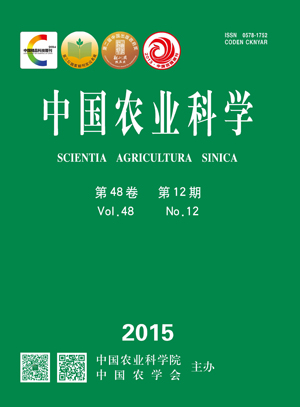-
1H NMR-Based Plasma Metabolic Profiling of Dairy Cows with Type I and Type II Ketosis
- LI Ying, XU Chuang, XIA Cheng, ZHANG Hong-you, SUN Ling-wei, XU Chu-chu
-
Scientia Agricultura Sinica. 2015, 48(12):
2449-2459.
doi:10.3864/j.issn.0578-1752.2015.12.018
-
 Abstract
(
571 )
Abstract
(
571 )
 HTML
(
3 )
HTML
(
3 )
 PDF (1267KB)
(
602
)
PDF (1267KB)
(
602
)
 Save
Save
-
References |
Related Articles |
Metrics
【Objective】To identify the differential metabolites in plasma among the cows of type I ketosis, type II ketosis and normal controls, the plasma metabolic profiles from all experimental cows were analyzed using 1H nuclear magnetic resonance technology (1H NMR).【Method】A total of 50 cows with 2 to 3 parities were selected at 7-28 days postpartum and divided into type I ketosis (K1, 20 cows), type II ketosis (K2, 20 cows) and normal control (C, 10 cows) according to glucose (Glc), 3-hydroxybutyrate acid (BHBA), non-esterified fatty acid (NEFA) level and clinical signs of the disease. Type I ketosis was defined as having plasma BHBA>1.20 mmol·L-1, plasma Glc<2.50 mmol·L-1, and plasma NEFA>0.50 mmol·L-1. Type II ketosis was defined as having plasma BHBA>1.20 mmol·L-1, Glc>2.80 mmol·L-1, and plasma NEFA>0.50 mmol·L-1. Healthy controls were those with plasma BHBA<1.00 mmol·L-1, plasma Glc>3.75 mmol·L-1, and plasma NEFA<0.40 mmol·L-1. The plasma metabolic profiles from all experimental cows were analyzed using 1H NMR. The data were processed by principal component analysis (PCA), and orthogonal partial least-squares discriminant analysis (OPLS-DA) was performed to identify the differential metabolites in plasma among the three groups.【Result】The results showed that OPLS-DA model was better to distinguish the three plasma samples. Compared with healthy controls, 7 differential metabolites were obtained from type II ketosis and healthy controls, such as alanine, lysine, 3-hydroxybutyrate, acetone, lactate, and so on, type II ketosis had higher plasma levels of BHBA, acetone, and lactate and lower levels of alanine, lysine, tyrosine, and creatine. Nineteen differential metabolites were obtained from type I ketosis and healthy controls, for example tyrosine, phenylalanine, creatine, 3-hydroxybutyrate, acetoneet, and so on. Type I had higher levels of BHBA and acetone and lower levels of tyrosine, phenylalanine, lysine, histidine, alanine, creatine, myo-inositol, β-Glc, glutamine, glutamate, citrate, α-Glc, formate, glycine, O-acetyl glycoprotein (OAG), and phosphocholine. Twenty-four differential metabolites were obtained from type I ketosis and type II ketosis, for instance citrate, histidine, β-glcose, isoleucine, VLDL/LDL, and so on. Compared with type II ketosis, type I ketosis had higher levels of BHBA, low density lipoprotein (LDL), very low density lipoprotein (VLDL), isoleucine, valine, acetone, leucine, and acetate and lower levels of citrate, tyrosine, histidine, creatine, glutamine, β-Glc, phenylalanine, glutamate, α-Glc, lysine, formate, glycine, phosphocholine, and OAG . 【Conclusion】The combination of 1H NMR and multivariate statistical analysis techniques could effectively distinguish different metabolites among type I, type II ketosis and the healthy control group, It is an important basis for further studying the clinical pathology, early detection, diagnosis and detailed pathogenesis of type I and type II ketosis in dairy cows in the future, which lays a foundation for preventing type I and type II ketosis in dairy cows effectively.









